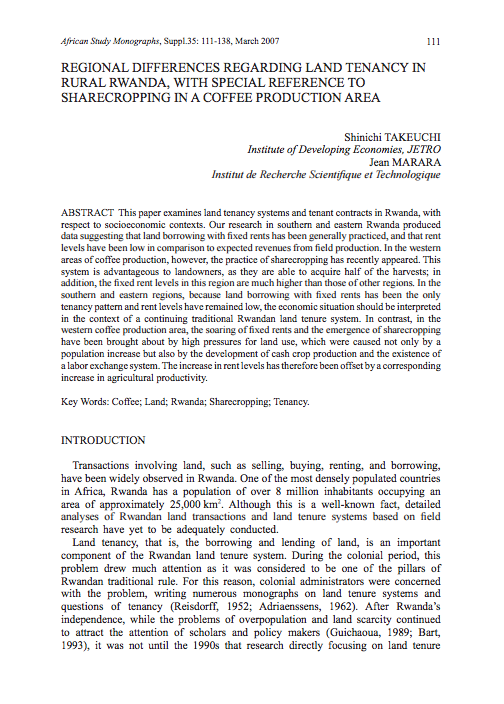Resource information
This paper examines land tenancy systems and tenant contracts in Rwanda, with
respect to socioeconomic contexts. Our research in southern and eastern Rwanda produced
data suggesting that land borrowing with fixed rents has been generally practiced, and that rent
levels have been low in comparison to expected revenues from field production. In the western
areas of coffee production, however, the practice of sharecropping has recently appeared. This
system is advantageous to landowners, as they are able to acquire half of the harvests; in
addition, the fixed rent levels in this region are much higher than those of other regions. In the
southern and eastern regions, because land borrowing with fixed rents has been the only
tenancy pattern and rent levels have remained low, the economic situation should be interpreted
in the context of a continuing traditional Rwandan land tenure system. In contrast, in the
western coffee production area, the soaring of fixed rents and the emergence of sharecropping
have been brought about by high pressures for land use, which were caused not only by a
population increase but also by the development of cash crop production and the existence of
a labor exchange system. The increase in rent levels has therefore been offset by a corresponding
increase in agricultural productivity.

